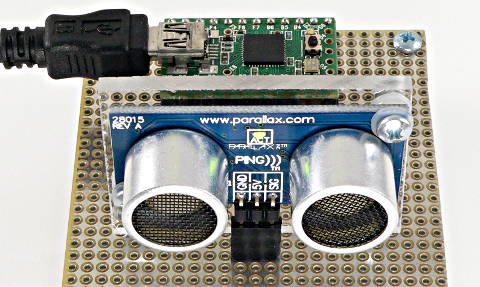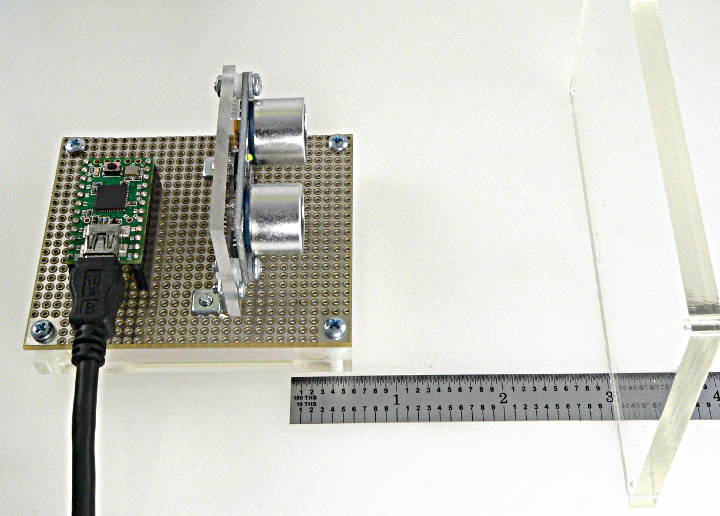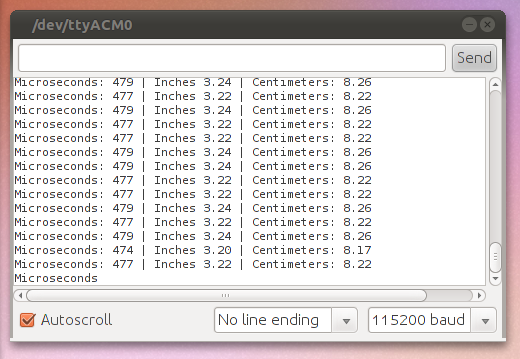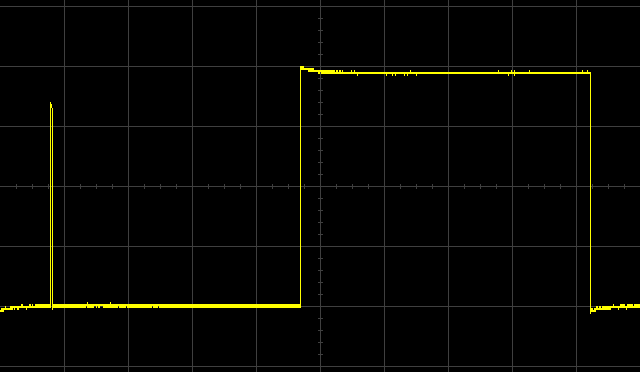Ping Library
The Ping library, by Caleb Zulawski, let you use the Parallax Ping))) ultrasonic sensor to make distance / range measurements.
| Download: |
Included with the Teensyduino Installer |
Hardware Requirements
Ping requires just 1 pin, and power.

Parallax Ping))) connected to Teensy 2.0 |
Basic Usage
Ping myPing = Ping(pin);Create an instance of the Ping library. You can connect many "Ping)))" sensors, with each on its own pin, and create instances of the library for each.
myPing.fire();Make the ultasonic measurement.
myPing.microseconds();Read the measurement in microseconds.
myPing.inches();Read the measurement, converted to inches.
myPing.centimeters();Read the measurement, converted to centimeters.
Example Program
Open the example from File > Examples > Ping > Ping_Library_Example.

Ping Measuring 3 Inch Distance |

|
#include <Ping.h> Ping ping = Ping(13); // Ping signal on pin 13 void setup() { Serial.begin(115200); } void loop(){ ping.fire(); Serial.print("Microseconds: "); Serial.print(ping.microseconds()); Serial.print(" | Inches "); Serial.print(ping.inches()); Serial.print(" | Centimeters: "); Serial.print(ping.centimeters()); Serial.println(); }
Using Teensy 3.0 with 5 Volt Ping
The Parallax Pin requires 5 volt power, which can be taken from Teensy 3.0's VIN or VUSB pins.A Ping sensor was tested with Teensy 3.0 to determine if it strongly drives the pin with 5 volts. The result appears to be Ping driving approximately 3.9 volts into the Teensy 3.0 pin. Using a 470 ohm or 1K resistor in series with the Ping signal may be wise (to limit the current Ping could inject into Teensy 3.0's built-in protection diodes), but at least the Ping output is not so strong to force Teensy 3.0's pin beyond 3.9 volts.

Teensy 3.0: Start Pulse is 3.3 Volts, Response Pulse is 3.9 Volts. |